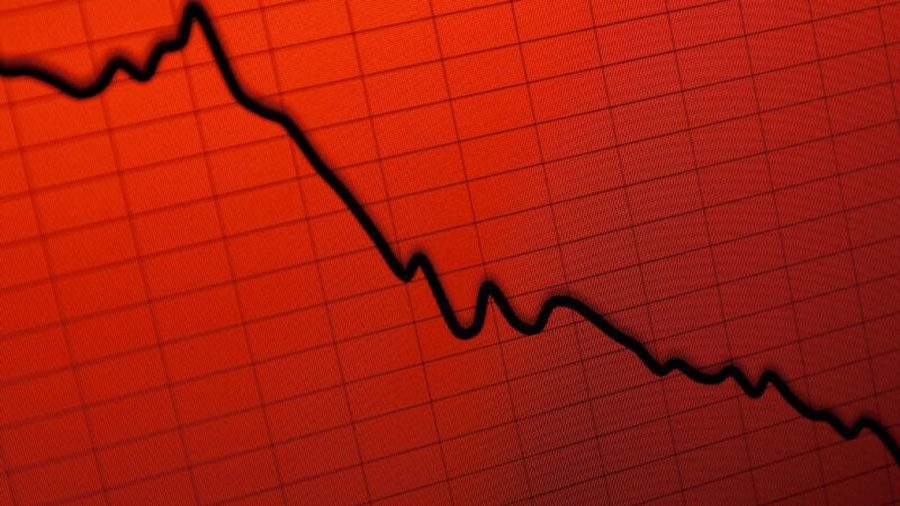The Friday U.S. jobs report outlining stagnating growth and higher unemployment in July is set to do even more damage this week. After the August 2 report took the Dow down 610 points and the Nasdaq down 418 points for the day to end the week, the Asian markets followed suit on Monday, with Japan’s Nikkei falling 12.4 percent, the worst one-day decline since the 1987 Black Monday crash, and South Korea’s Kospi index falling nearly 9 percent for the day.
Europe looked to be following suit as markets there were down sharply in early trading, while the U.S. market signaled another rough day ahead, with pre-market futures down down more than 900 points for both the Dow and the Nasdaq on Monday, August 5.
This chain of events comes after the Fed failed to cut interest rates last week, deferring to a possible cut in September, and the Friday report from The Bureau of Labor Statistics showing that the U.S. economy added only 114,000 non-farm payroll jobs in July, fewer than the 175,000 expected by economists. The unemployment rate rose to 4.3 percent—its highest level since October 2021.
In an interview with Yahoo Finance, Marc Pinto, head of Americas equities at Janus Henderson Investors, said the July report is “definitely going to raise concerns now that the Fed is behind the eight ball.”
According to the National Retail Federation’s (NRF) Chief Economist Jack Kleinhenz, critical elements of the economy are still growing but appear to have slowed enough to be on track for the Federal Reserve to lower interest rates later this year.
“The consumer environment has kept the expansion on a positive path toward a ‘soft landing’ despite high interest rates,” Kleinhenz said. “Meanwhile, inflation has not yet been fully tamed, but we are seeing progress.”
Kleinhenz’s comments came in the August Issue of the NRF’s Monthly Economic Review, which said year-over-year gross domestic product growth rebounded to 2.8 percent in the second quarter, doubling the 1.4 percent seen in the first quarter and worked out to 2.1 percent for the first six months of the year.
Inflation, as measured by The Personal Consumption Expenditures Price Index, followed by the Fed, fell to 2.6 percent year-over-year from 3.4 percent in the first quarter. That was still above the Fed’s target of 2 percent, but inflation was driven mostly by prices for services and was near zero for retail goods.
In addition, “Job growth has been lumpy but has clearly moderated and is likely to keep the Federal Reserve on course to begin cutting interest rates later this year,” Kleinhenz said. The three-month average for payroll gains slowed to 177,000 jobs in June from 267,000 in March, showing that the economy is growing but cooling. Hiring fell from 5.7 million jobs in May to 5.3 million in June, and job openings fell from 8.23 million to 8.18 million in the same period.
His comments came before the Friday, July 2 jobs report.
Kleinhenz said retail sales data from the Census Bureau “showed a sturdy and adaptable U.S. consumer willing to spend despite cost pressures” during the second quarter.
Total retail sales were up 2.5 percent year-over-year in the second quarter and 2.8 percent for the first six months of 2024. Core retail sales, as defined by the NRF, excluding automobile dealers, gas stations and restaurants, were up 3.2 percent year-over-year for the first six months. That was in line with the NRF’s 2024 core retail sales forecast to grow between 2.5 percent and 3.5 percent over 2023.
“While the overall economy continued to display remarkable strength in the first half of 2024, consumer confidence remains weak,” Kleinhenz said.
With consumers wary of high service prices, sentiment measured by The University of Michigan’s monthly survey fell for the fourth month in a row to 66 in July from a recent high of 79 in March. Nonetheless, consumers’ ability and willingness to spend “have been buoyed by job and wage gains,” with disposable income up 3.6 percent year over year in the second quarter, and a Federal Reserve Bank of New York survey shows consumers think inflation will gradually slow over the next few years, from 3 percent a year from now to 2.9 percent in three years and 2.8 percent in five years.
The Fed left interest rates unchanged last week, but Chairman Jerome Powell said a rate cut “could be on the table” in September. Now the argument is whether it will be 25 or 50 basis points, with analysts arguing the latter could spur fears that the Fed waited too long to cut, spurring a sell-off in equities.
RSM chief economist Joe Brusuelas told Yahoo Finance that the latest jobs report “just about guarantees you are going to get a 25-basis-point September cut” and also includes cuts in November and December.
There is even a “rational argument” to be made that a 50-basis-point cut could be made at the September meeting, Brusuelas added, and that argument is going to be waged “over the next six weeks.”
One concern for some Fed watchers interviewed for the Yahoo Finance report is that the 4.3 percent unemployment rate has now reportedly triggered the so-called Sahm Rule, a rule developed by economist Claudia Sahm that has successfully predicted recessions 100 percent of the time since the early 1970s.
The important threshold crossed Friday was that the three-month average of the national unemployment rate rose more than 0.5 percent from the previous 12-month low, Yahoo Finance noted.
Image courtesy Dreamstime










